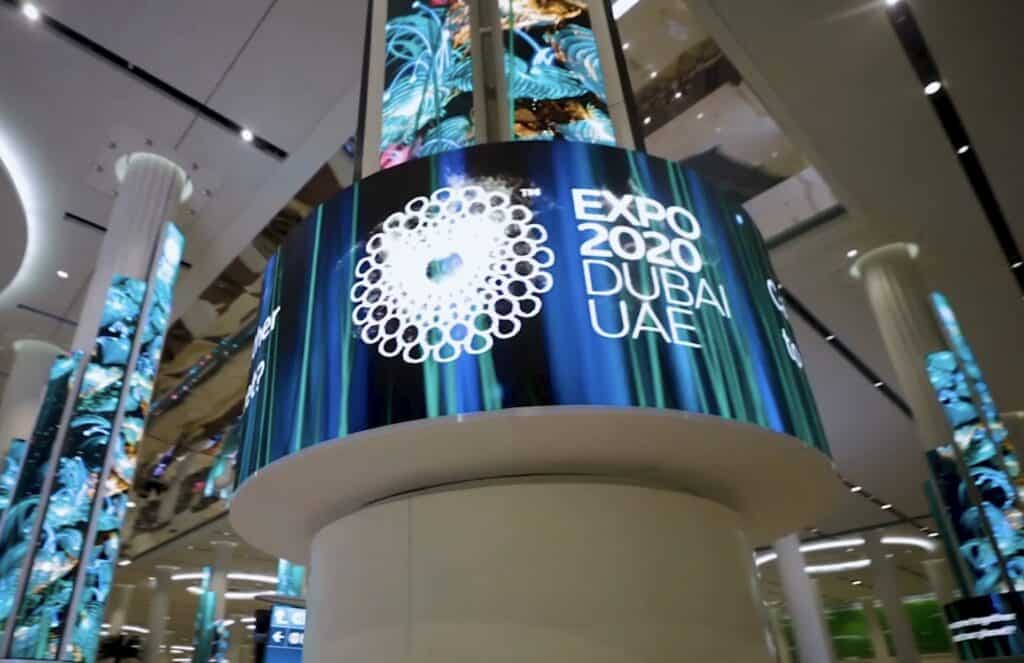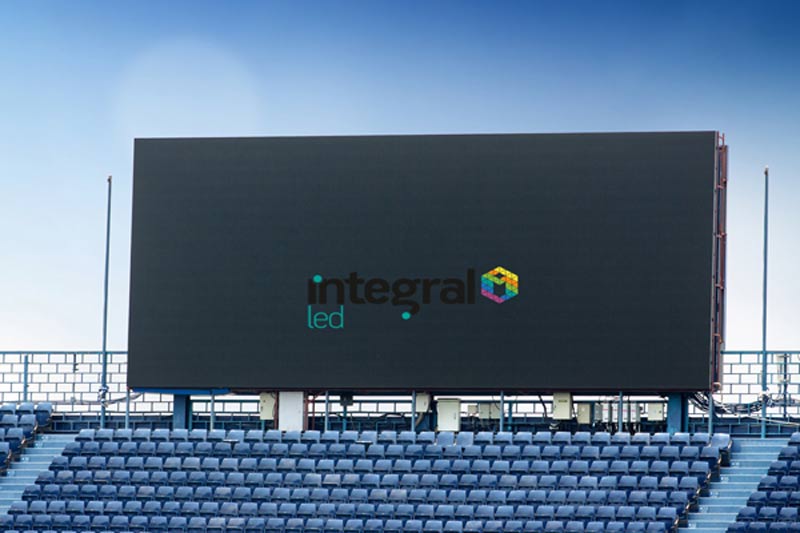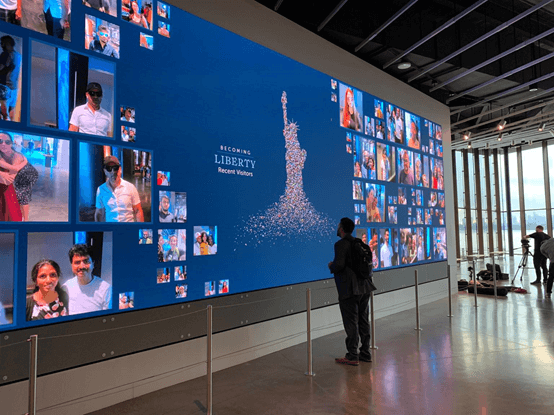Weather and durability are extremely important factors when looking into LED displays particularly for outdoor and high-traffic installations. Here's the reasons why LED displays are important:
1. The product's durability and cost-effectiveness
Durability: Durable LCD displays are designed to stand up to mechanical stress, such as impact, vibrations and other physical strains. A display with high durability will last longer and decrease the need for repairs and replacements. This means a greater overall cost-efficiency.
Application: For environments in which the display is subject to potential physical damage like public areas, sports arenas or rental markets, durability is crucial for ensuring that your investment lasts.
2. Outdoor Performance
Weather Resistance Outdoor LED displays need to be able to withstand a variety of weather conditions like weather, wind and variations. Weather-resistant displays are designed to function reliably in the conditions and without degrading performance.
IP Rating IP Rating is a rating which indicates the level of protection against water and dust. Outdoor displays should have at the very least IP65 protection from dust jets as well as water. This ensures that the display can resist harsh weather without short-circuiting.
Applications Weather resistance is a must for outdoor installations like billboards stadium screens, billboards, and digital signage. A display that fails due to weather conditions can result in expensive repairs and downtime.
3. Temperature Resistance
LED Displays can be exposed to extreme hot and cold temperatures. This could affect their performance. The best displays can be used in a broad temperature range. Many of them have built-in cooling and heating systems that ensure maximum performance.
Application: In regions that have extreme climates, like hot deserts or cold winters choosing a display that has sufficient temperature resistance will ensure that it operates year-round.
4. and Moisture Resistance and Moisture Resistance
Waterproofing: LEDs with waterproof coatings stop moisture from entering the display, which can cause short circuits and damage to the internal components. This is especially important in environments that have excessive humidity levels or frequent rain.
Application: To ensure that there are no failures and to increase the life of displays display's waterproofing in coastal areas or near water bodies is an absolute requirement.
5. UV Protection and sunlight durability
UV Resistance - Excessive exposure to UV radiation can damage or discolor displays. UV-resistant displays are designed to resist the damaging effects of ultraviolet rays while maintaining their appearance and performance over the course of time.
Application: In bright environments or areas where the screen may be directly in direct sunlight, it is essential that the screen withstands UV rays to stop them from fading.
6. Safety and Compliance
Fire resistance: To ensure compliance with safety standards, some places require that displays be equipped with fire-proof characteristics. This is particularly important in indoor environments where high occupancy occurs, such as malls or concert venues.
Application: By making sure that the display complies with relevant safety rules, you do more than protect your investment but also ensure the compliance with local laws and legal requirements.
7. Maintenance and Reduction of Downtime
Low Maintenance: Displays that are durable and weatherproof require less maintenance because they are less prone to damage from the environment. This decreases the amount of time that displays are down and the cost of maintenance.
Application: In applications that require minimal maintenance, for example, emergency information or transportation hubs where disruption or downtime could be disruptive and costly, durability and resistance to weather guarantee the display's functionality.
Conclusion:
Durability and weather resistance are vital to ensure the longevity, reliability and efficiency of LED displays, particularly in high stress or outdoor environments. These aspects protect your investment by ensuring the display is able to withstand harsh conditions. This will reduce the requirement for repairs and ensures a consistent performance. When durability and weather are crucial, LED displays should be prioritized. View the best creative led displays for more examples including outdoor led monitor, led panels, led light sign board, video wall tv, display device, led panel rental, led wall, led a board, led screen panels, led on screen and more.

When Selecting An Led Display How Important Is It To Take Into Account The Rate Of Refresh?
What's the significance of Refresh rate when researching LED displays? The refresh rate is essential for a number of reasons.
1. Image Smoothness and clarity
The term "refresh rate" is measured as the number of times per second (measured either in Hertz or Hz) through which the display updates it's image. A higher refresh rate results in smoother motion and reduces flickering.
Importance: For screens that show video content animations, fast-moving images or animated graphics, a higher speed of refresh (such as 3,840Hz or more) will ensure that the movement is fluid and without stuttering. This is particularly important in applications like stadiums for sports or digital signage, where smooth visual performance improves the experience of viewers.
2. Flickerless Performance
Flicker: Displays that have low refresh rates can produce noticeable flickering, particularly when seen through a camera, or slow-motion videos. The flickering of images can cause eye strain or fatigue, which can make it difficult to see the screen for long periods of time.
Application: In settings where the display will be filmed or photographed, such as in broadcasting studios or at events, a high refresh rate reduces flicker and makes sure that the footage is taken cleanly without visible artifacts.
3. Visual Quality in Different Lighting Situations
Effect on Brightness Impact on Brightness: A higher refresh rate can affect the performance of a display under different lighting conditions. For example, if the lighting is bright by a bright light, a higher rate of refreshment helps to maintain image consistency and quality. This can reduce any visible flickering, which could affect the effectiveness of the display.
It is most ideal for outdoor stage shows, events, and similar situations, in which lighting conditions could change quickly or become difficult to control.
4. Content Compatibility
Synchronization: The display's refresh rate has to be compatible with the source of the content for example, cameras, video playback systems or live broadcast feeds. If the display's refresh rate is not in line with the frame rate of the content, it can cause judder or mismatched frames, which negatively impacts the experience of watching.
Application If content is sourced from different sources in professional settings like TV studios and large-scale event venues Matching the refresh rates to the frame rates of the content is essential for smooth playback.
5. Enhance Your Viewing Experience
Motion Handling: High-refresh rates can manage content with a high speed and reduce motion blur and provide a clearer image. This is helpful in scenarios such as gaming, sports broadcasting or other settings which show fast-moving action.
Application: In venues with high-quality gaming, sports, or other content, a fast refresh rate will ensure that viewers see every detail clearly.
6. Reduction of eye strain
Comfort: Low refresh rate can cause eye strain while viewing for prolonged durations, particularly in situations where people are close to the screen, or when content is being watched over a prolonged period.
Application: A high refresh rate is beneficial in offices, retail spaces, and other public places where people are likely be watching displays for long durations of time. It creates an enjoyable experience.
7. Performance of Rental and Staging Applications
The ability to adapt - for LED displays used to display different content in various environments A high refresh rate assures that the display will be able to meet the needs of any event. This can include live performances as well as corporate presentations and multimedia displays.
Application: In these settings, where the display must adapt to different content types and needs of the viewers A high refresh rate provides versatility and reliability.
Conclusion:
The refresh rate is essential to LED displays. They impact directly the comfort, versatility and quality of the display. This is especially important when dealing with dynamic content, live events or situations where the screen is used for long durations of time. Prioritize a high-refresh rate when researching LED displays to ensure smooth, unflinching performance that can enhance viewers' experience and meet the specifications for your particular application. Read the most popular quality rental led display for more advice including led screen panels, outdoor led panel, wall screen, advertising displays, led screen display rental, wall tv, led transparent screen, led panels, led screen, display light led and more.

How Important Are Cost, Roi And Energy Efficiency When Researching Led Displays?
In researching LED displays it is important to take into account factors such as cost, ROI, as well as energy efficiency. These are crucial as they directly impact on the investment's economic viability as well as its long-term benefits. Let's look at the reason why each one of these aspects is important:
1. Initial Cost
Cost considerations: The initial cost associated with purchasing LED displays can be an important factor in any project. It is not only the cost of a LED display but also costs for installation, mounting structure as well as any other equipment.
Quality and. Cost: Lower-cost displays might appear attractive at first, but they might have a price tag that isn't as high regarding quality as well as durability or features. The initial cost of a display should be balanced against the desired performance.
Application: In cases where budgets are tight, careful evaluation of performance versus cost is essential. High-end displays are often needed for specific applications like advertisements in areas with high traffic. However areas that are less demanding may only require a more affordable display.
2. Return on Investment
Revenue generation - The return on investment of an LCD display is often dependent on its capacity to generate income, either through advertising or increased visibility for a brand. A display that effectively attracts people's attention and offers engaging content can yield a substantial ROI, either through revenues from sales or advertisements.
Longevity and Durability Displays that last and last longer typically offer a greater ROI. They require less replacement over time and incur lower maintenance costs. It is possible to reduce long-term costs by investing more upfront.
Impact of Features on ROI Features such as high resolution, wide view angle, and bright brightness may increase initial expenses but increase the effectiveness of the display. This can lead to a better ROI through increased interaction and enhancing visibility.
3. Energy Efficiency
Operational Costs: Energy efficiency is a key aspect in reducing the cost of operating an LED display. The lower the cost of electricity is, the better. This will be especially applicable to large-sized displays or displays which operate 24/7.
Environmental Impact Displays that use less energy contribute to sustainable goals by reducing carbon footprints. It's becoming more important for companies and organizations who have a strong commitment to sustainability or have to comply with energy regulations.
Long-Term Savings: While energy efficient displays may have a higher initial price but the savings on power costs over the lifespan of the display may be substantial, enhancing the ROI overall.
Applications: for installations located in regions with significant energy costs or for large-scale deployments where power consumption can be high, energy efficiency can make an enormous difference to overall operational expenses.
4. Total Cost of Ownership
Maintenance and Repairs. The total cost includes the price of purchase and also the cost for repairs, maintenance and downtime. Displays that are more durable and last longer typically provide a lower TCO, making them the most cost-effective option in the long run.
Enhancements and Scalability: Take into consideration the ease of updating or scaling the display system. A modular display system that is easily upgraded or expanded with low cost can be a better long-term investment.
Application: In environments which are likely to have display areas for a long period of years (such as corporate spaces and high traffic retail spaces or public spaces) The TCO will ensure that investment remain cost effective.
It is possible to finance the purchase using various possibilities.
Flexibility in Financing - Many suppliers offer flexible financing options, which can help to reduce the initial costs of high quality displays. This is particularly helpful for businesses that want to save cash and continue to invest in high-quality digital signage.
Renting options can affect ROI as well, since they provide businesses with the ability to upgrade their displays to more modern technology without making a massive initial investment. They also make sure that displays are up-to-date and can provide a substantial return.
6. Market Competitiveness
Cost in comparison to. Competitors: The cost and ROI of your LED display could also impact your competitiveness in the market. You may be able to outdo your competitors and gain more clients or customers, thus generating greater returns on investment.
Application: In industries with significant competition, such as retail and entertainment, investing in displays that are higher quality, but also deliver higher ROI can provide you with an edge.
Conclusion:
A LED display's value and longevity are determined by factors like cost and ROI, energy efficiency as well as the ROI. By balancing an initial cost and the anticipated return on investment, incorporating the efficiency of energy and operating costs as well as calculating the total cost of ownership, you can make sure your display will meet financial and performance goals. These aspects are vital to making a well-informed choice that is in line with your budget, operational goals and long-term goals. See the top flexible led panels for blog examples including outdoor digital screens, led a board, transparent led screen display, wall tv led, transparent led screen, video wall tv, screen led display, transparent led screen, led board, led the wall and more.
